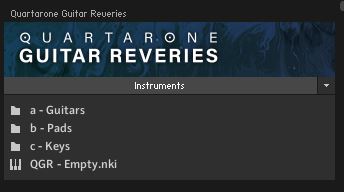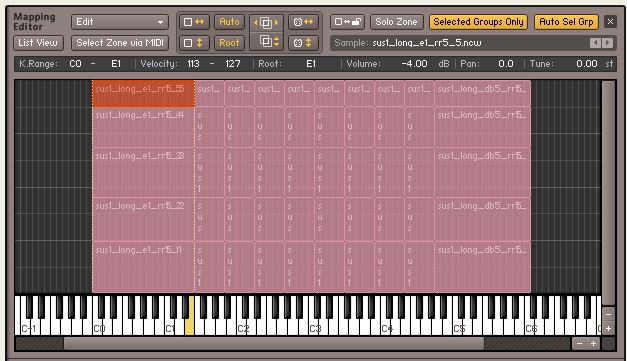*Disclaimer, this plugin was provided free of charge for the purpose of Review
Summary
I like this library and found it to be of great use out of the box with little to no processing. The presets are extremely well done and the naming and categories are spot on, which is often more important to me than the power of the interface because I often just want to get a sound and be able to locate it quickly and move on to writing music.
The library is not without its flaws and it should be noted that this is the company's first kontakt library. It’s interface doesn’t feel personalized to the instrument and some of the symbols they choose do not visually convey what they do clearly. There are no tool tips to help with this. The plus sign looks like it should do something but it doesn’t and they opted for the individual script slots instead of one flush UI experience. Despite these nit-picks the instrument is easy to pick up after some experimenting, the general approach ensures the UI doesn't get in the way. The sounds are fantastic (and what actually matters anyways) and again just from the speed and well categorized and varied sounds I would recommend this library. To compare to a similar product, Scoring Guitars has a similar aim but it is more focused on pads, beds and phrasing over keyboard-focused play. Scoring Guitars is cheaper at $49 but there is a strong argument to be made for the playability QGR offers over scoring guitars.
The full name of this product is Quartarone Guitar Reveries Cinematic Atmospheric Electric Guitar and is inspired (and sampled from) the play style of Claudio Quartarone who is an Italian guitarist and composer. The instrument itself consists of combining 2 sound layers together through their sampling and the Kontakt engine provided.
It is NKS ready and is 9 GB in size. The library’s play style is key based, with no phrase or
sequenced
patches.
Modulation is completely absent from the library.
The patches are offered in 3 categories.
1. Guitars
2. Pads
3. Keys

These names I found to be good conventions and accurate to the types of patches found inside. It is a simple approach and makes finding a desired sound easy. Guitar focuses more on how a guitar would actually sound while the other two categories feature more “textured” approaches. An empty patch is also available for the user to construct their own patch from the sample material. Access to the samples directly is not possible but the UI currently is unlocked and the mapping of the samples and general kontakt engine can be edited. The library in particular excelled at organic smooth pad sounds.
These names I found to be good conventions and accurate to the types of patches found inside. It is a simple approach and makes finding a desired sound easy. Guitar focuses more on how a guitar would actually sound while the other two categories feature more “textured” approaches. An empty patch is also available for the user to construct their own patch from the sample material. Access to the samples directly is not possible but the UI currently is unlocked and the mapping of the samples and general kontakt engine can be edited. The library in particular excelled at organic smooth pad sounds.
The UI is a general engine and any library that is based on mixing two sources could be thrown in there, which isn’t a bad thing, it is familiar and easy to use. The symbols they choose for Wet and Saturation are not at first apparent what they do until their effect is heard. The others have pretty standard symbols. The size of the UI is very pleasing and well-chosen. It’s a smaller form factor which is quite nice if all the libraries being used have a similar size to save on screen space.
The key colors indicate if a region is sampled (blue) or stretched (green). However a close look at the sampling shows a single sample is stretched across 5 notes for blue and 17 notes for green. So the detail of the sampling per note is not huge, but this also keeps the instrument light and I did not notice any odd transitions or unusual artifacts so the choice of keeping the sampling light worked out in my opinion. Round Robins are also present though I didn’t see this advertised anywhere on the site or manual. The number of round robins varies. In general there appears to be 5 velocity levels which also sound very natural.

The effects section has the standard effects you would expect out of a Kontakt library. The have a nice interface and there are layer effects and global effects.
The manual is extremely well done. It is very detailed. There are no tooltips which may have been helpful for some of the less used symbols. There is also a good walk through video provided by the company.
My experience in working with the library was very positive, I quickly found very useful sounds right away and was easily able to adjust them in the interface with little to no time spent looking for support videos or a manual. The main attraction in this library for me personally is the pads and pluck based key patches and would be the main driving force behind picking it up.